Railroad demurrage is a charge that compensates the rail carriers when railcars are held in the carriers serving yard waiting to be ordered in for placement. This a charge that rail shippers try to avoid, as it’s a fee that compounds on top of the loss of revenue by a railcar just sitting and not moving. If you ship by rail, or if your supply chain involves rail, you’ve probably come across demurrage before! And if you have, you know this penalty, while designed to encourage efficient use of railcars in the rail network, can be confusing. And if you are just starting out in rail shipping, it’s important to understand what rail shipping demurrage is and how to dispute it.
Below we’ll look at the rules of demurrage, how they’ve evolved over the years, and how you can dispute any demurrage charges you receive. If you want to proactively lower your demurrage charges, check out our Strategies to Reduce Demurrage blog post!
Playing by the Demurrage Rules
No matter where you’re shipping, there’s a high chance you’re going to encounter demurrage. So what is rail shipping demurrage? The purpose of demurrage is always the same; to keep rail serving yards open and moving railcars, and then to levy charges to encourage less dwell time in serving yards. However, sometimes there can be unpredictability in rail shipping, which means demurrage can be unpredictable.
Since demurrage can be volatile, it’s important for you to know when demurrage is going to impact your bottom line. Understanding how each railroad calculates demurrage charges is essential in keeping these pesky demurrage costs to a minimum. Once you understand what rail shipping demurrage is and become the expert of the game, you can start to develop strategies that will help reduce overall demurrage costs.
However, that’s easier said than done! Today’s demurrage calculations are not always straight-forward. It requires diligent record-keeping on behalf of rail shippers to understand and combat railroad demurrage reporting.
Demurrage Start and Stop
Understanding the rules the railroads use to determine when and how you can get charged for demurrage is important to understanding your charges. However, with the advent of more modern technology, many aspects of rail shipping are automated, allowing the railroads to charge based off a much greater variety of triggers. Looking back in time at how the railroads used to determine demurrage, it was more simplistic than the modern format. For instance, previously a railcar would first become Constructively Placed, which triggered the start of the demurrage clock, and then the railcar would become Actually Placed, which would stop the demurrage clock.
Nowadays, demurrage charges can much more be situational, and triggers can be much more specific.
For example, some railroads charge demurrage based on car type, so you could be charged a certain amount of demurrage per day for a hopper car, but a higher amount per day for a tank car. Location can be another factor; for instance, if a railroad has two locations—perhaps one a remote location, and the other a busy location—the railroad will want to move the busier, heavier traffic areas more quickly, so the demurrage charges would be higher there. Tiered charges are also a possibility, where the daily demurrage charge increases by a set daily amount after a period. In this form of demurrage, if a car sits for the period, say a week, then the daily charges after that week are higher than they were during the week. Standard Transportation Commodity Codes (STCC) can be another way to determine demurrage charges, so hazardous commodities would be charged higher per day than a less dangerous commodity.
Switching Schedule
Another demurrage rule to keep in mind is the switch schedule, which is when a railroad is available to move railcars to and from your industry. For instance, if there is railroad owned rail yard outside your plant, someone must be able to move your cars on the right track, and then make them go to and from your plant. When they are available to complete this task is the days they can switch on their switch schedule. If you don’t already, find out your serving railroad’s switch schedule and which days they can switch.
This is important to demurrage because of the consequences of missing a switch could be demurrage charges. If you call it in after a switch, that could potentially be your fault and you could be charged demurrage until the next switch is available.
Embargoes
In addition to having to manage demurrage costs daily, don’t forget to consider embargo threats. The labor shortages that the entire rail industry have been dealing with have added another layer of complications in the demurrage management process. Embargoes are put in place to manage traffic when congestion or interference at certain locations requires controlled movements and limitations to keep things moving. For instance, if a rail switching facility finds itself constantly filled with snarled traffic, an embargo may be used to limit rail traffic enough to untangle the mess.
Railcars bunching in rail yards or railcars getting misrouted are not scenarios that you can plan for. When a delay cause some of your cars to be delayed or caught in traffic, your more recent railcars might arrive at the same time as the cars you sent previously. When all your cars show up at once this causes demurrage because your cars are sitting still; furthermore, bunched railcars put your customers at risk of an embargo because of the number of cars sitting in serving yards.
For more information on embargoes, we have a blog post all about embargoes and how to plan for them. The key is to keep an eye on your yard inventory daily. Every railroad has their own set of rules on how demurrage is calculated. If you feel your demurrage costs are spiraling out of control, contact your railroad account rep or contact us.
Disputing Demurrage Charges
Nowadays you have demurrage management tools at your fingertips; however, before these tools were available, the railroads would send you a monthly demurrage invoice based on your previous month’s activity. But now, in most cases, you can see your daily demurrage activity right on the railroad’s websites! Using these tools can help you more effectively plan your supply chain while reducing demurrage charges. If you are faced with a discrepancy in your demurrage charge, you can now dispute the event in real time. Logging into the railroads websites allows you submit a case with your dispute details.
However, despite today’s technology and the automation of ordering railcars, disputing demurrage charges can still be an uphill battle. Below are some tips and best practices to help you dispute demurrage charges.
Maintain Missed Switch Records
Maintaining missed switch records is especially important. The railroads do a decent job of catching these and some even provide an additional credit for missed switches. Nevertheless, as we talked about above, there are some occasions where it could be your fault if you miss a switch. Thus, it is a good idea to maintain records on when the railroads miss a switch so you can make sure if you are not at fault, you have the evidence. Opening a case with the railroads that they can link the dispute to is the cleanest way to get the railroads to honor a dispute.
Reporting Errors
If a railcar shows up at your industry and the car is still out in the yard, you will want to open a case on these situations as well. Reporting errors that you catch for your organization might not have been picked up on by the railroad or the other involved parties. Rather than letting it sit, open a case so that action can be taken.
Yard Bunching
Not all railroads will honor railcar bunching in rail yards as disputes, but some will. If you notice ongoing issues with bunching, escalate this to your railroad representative to have further discussions on how this is impacting your supply chain and increasing your demurrage costs.
Demurrage is a charge that no one likes to have; after all, you’re being charged for your railcar to sit in the railroad’s serving yard! However, the best way to get started on combating demurrage is to understand the charge and the rules around your demurrage penalties. Although it’s a lot to consider, it’s a good idea to examine the rules for how your serving railroads will charge demurrage so you can be prepared. And if you need to dispute charges, make sure you’re talking to your railroad representatives and presenting the evidence you have.
If you’ve tried all that and are still struggling with demurrage, let us help! Our rail experts can assess your rail logistics and offer you a plan to combat charges or improve your rail shipping to avoid cars sitting. Click here for a free assessment!
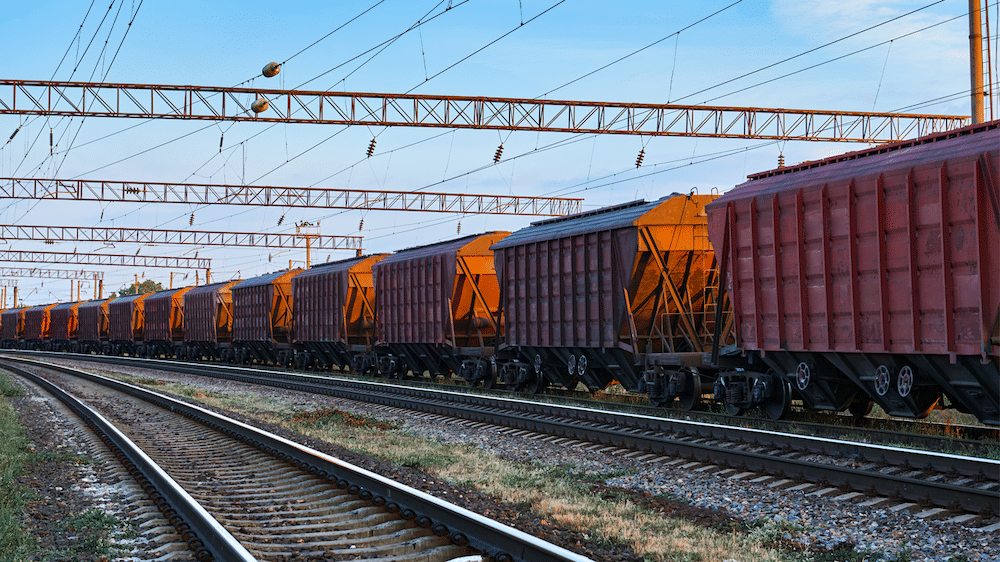

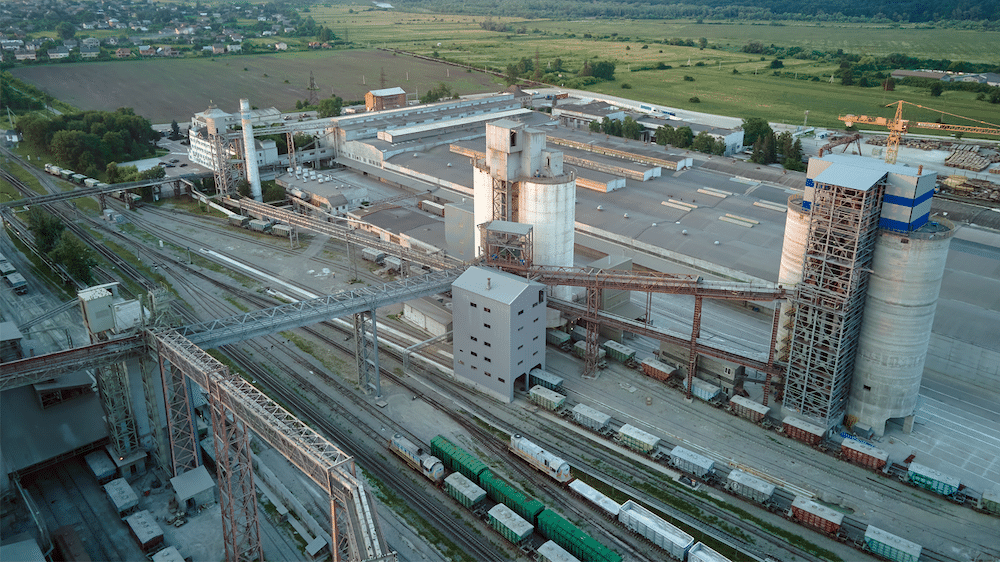
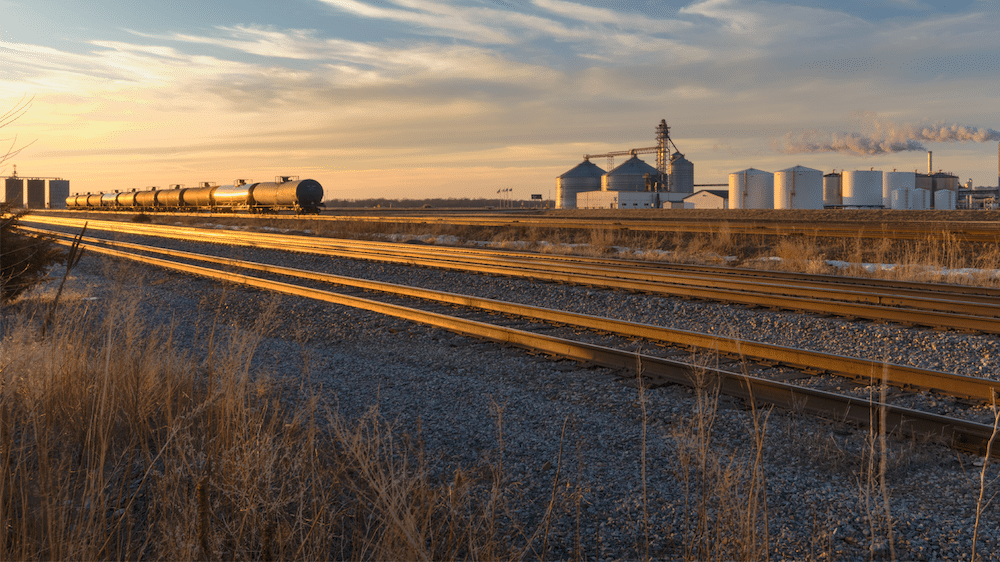


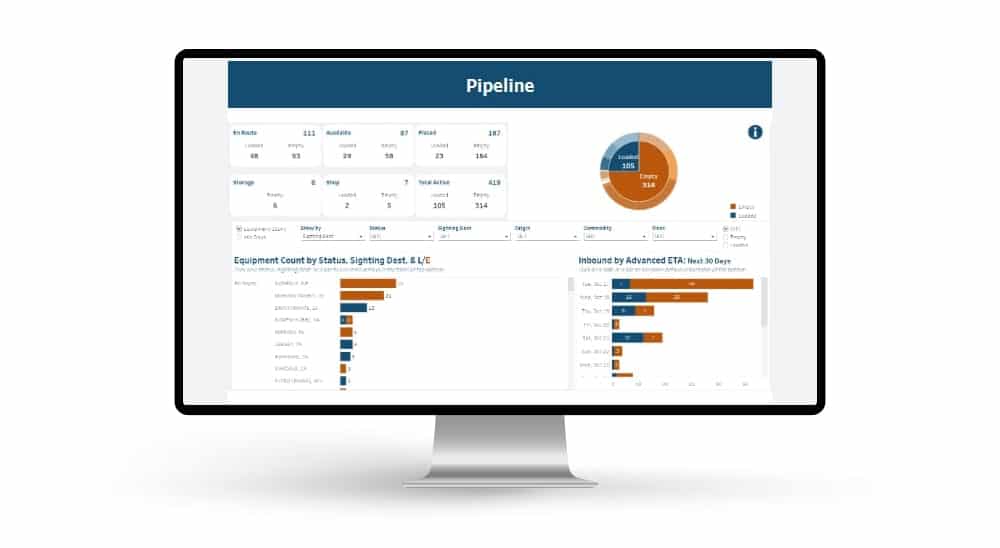 Automated exception reporting of the railcar tracking data makes it easy to identify and troubleshoot jeopardized shipments, thereby enabling you to provide better service to your stakeholders.
Automated exception reporting of the railcar tracking data makes it easy to identify and troubleshoot jeopardized shipments, thereby enabling you to provide better service to your stakeholders.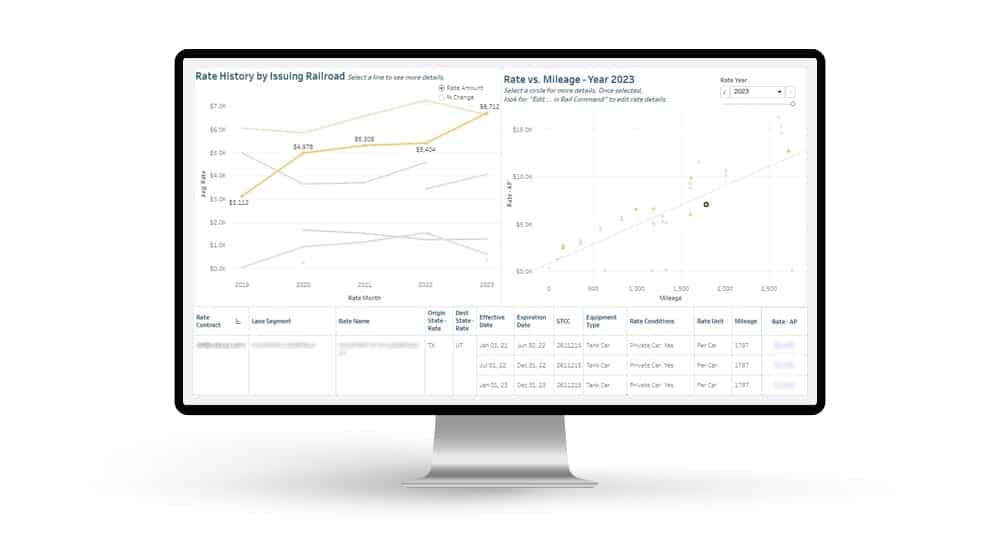 Receive notification of pending rate expirations. Tariff changes and fuel surcharges can be automatically updated.
Receive notification of pending rate expirations. Tariff changes and fuel surcharges can be automatically updated.